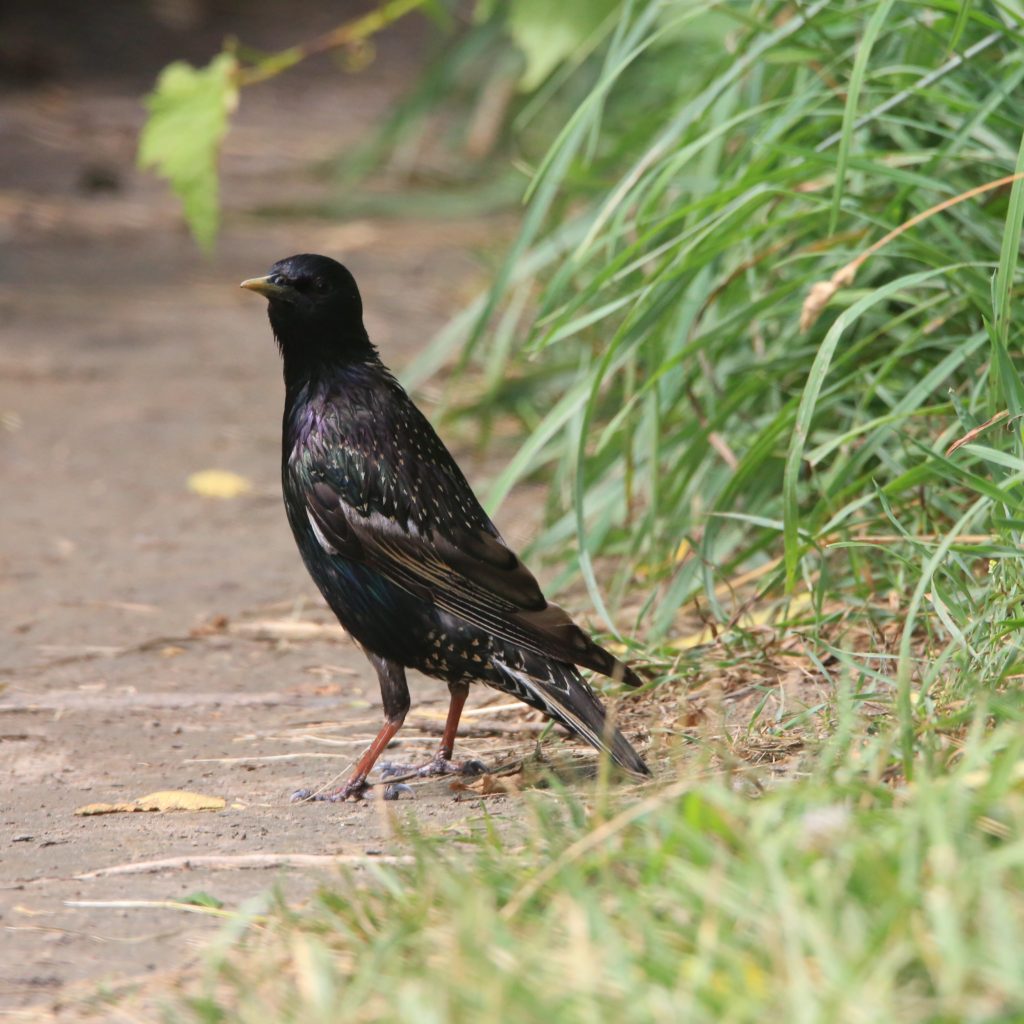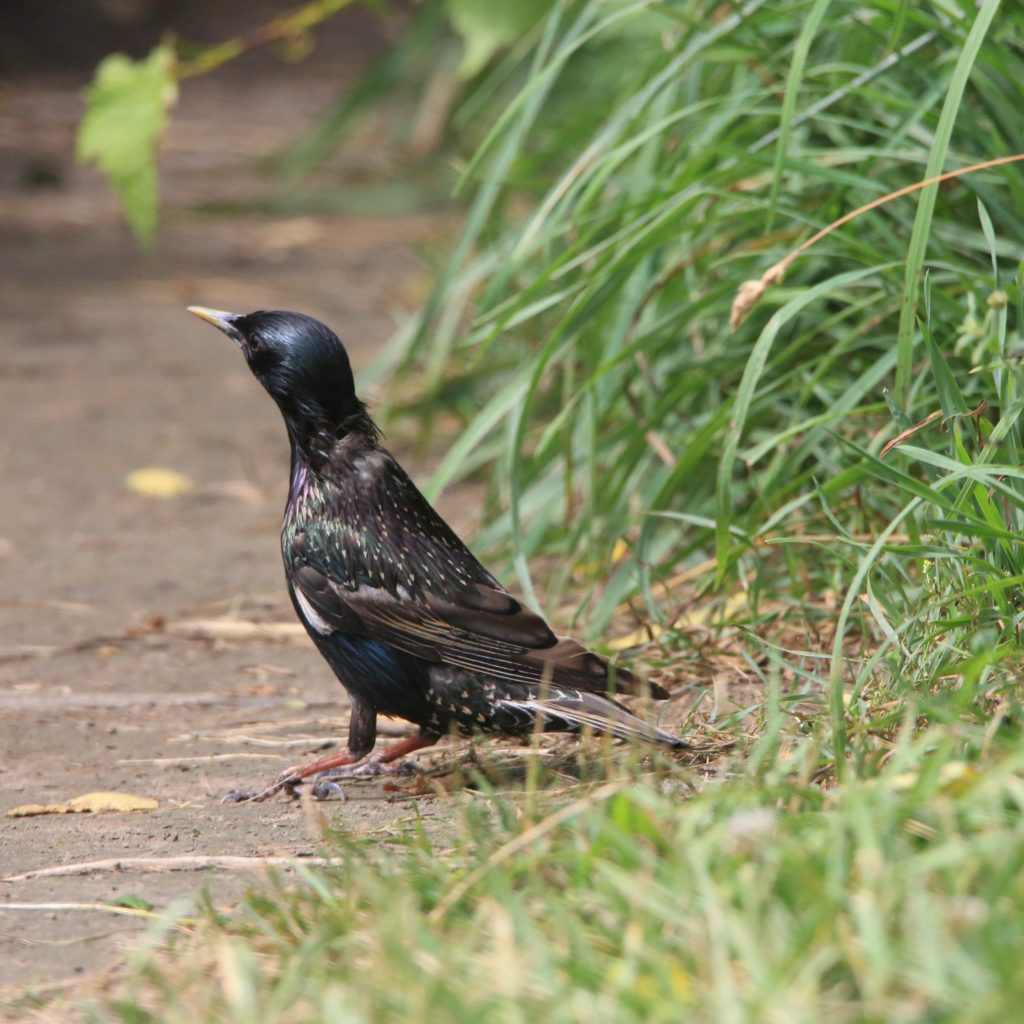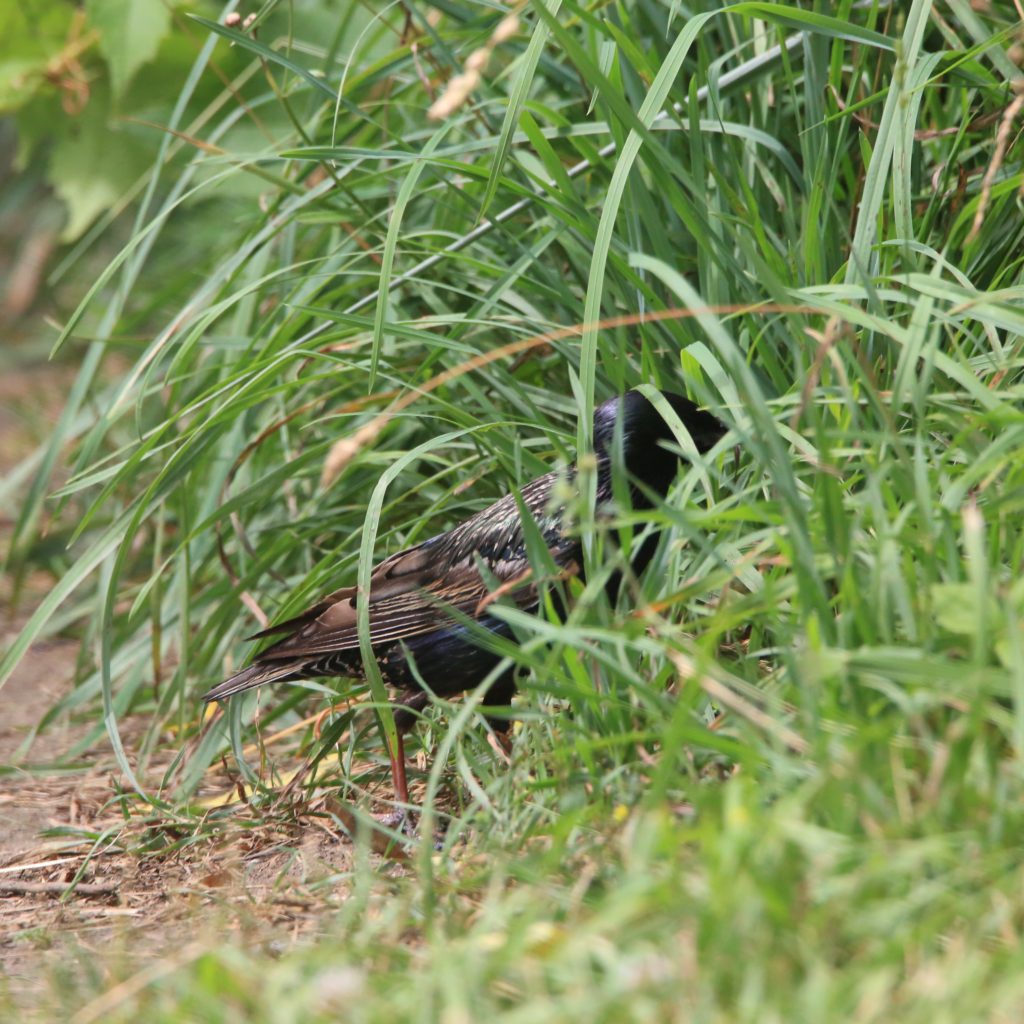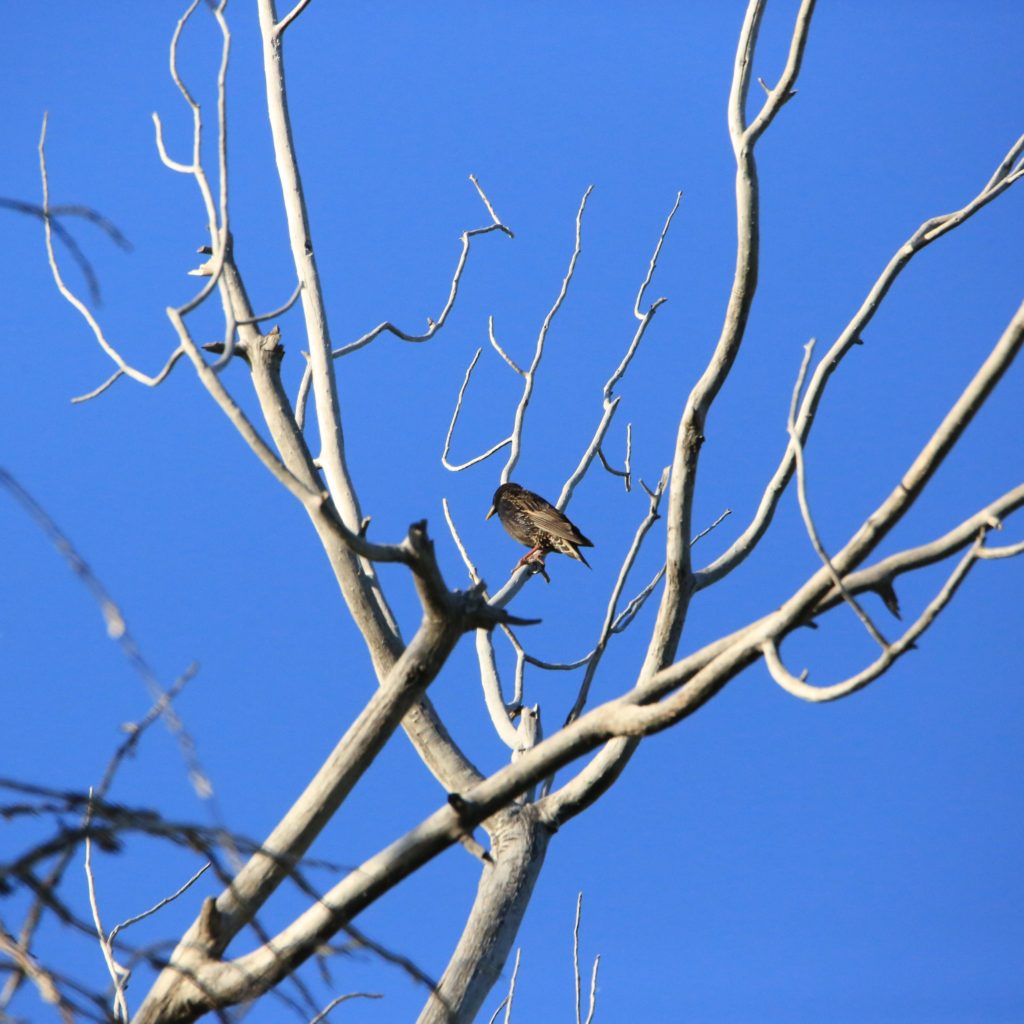
The European Starling
A European Starling is a fun bird to see while bird watching. Below are some tips to help you identify European Starlings. We have also put together a list of fun European Starling t-shirts, European Starling bird patches, bird houses, bird feeders, binoculars, stickers and other fun bird watching items.
About European Starlings
These birds were first brought in the United States in 1890, but have spread to occupy much of the continent. Many regard them as a pet due to their intelligence, toughness, and adaptability. They are overall social birds that can be found in large flocks outside the breeding seasons. These strong fliers can reach a speed of 48 mph. Some of their distinctive features include:
Description and Identification
The highlights on the black feathers which are mainly a shade of green or pinkish-purple are one of the distinctive features of European Starling. In both males and females, the thick set of feathers is a distinctive colour of green or black. Cold weather causes the tips of the feathers to perish and specks of white appear on their breasts. The feathers that adorn their throat are long and loose for males whereas it is short and pointed for females. The shape of the feathers is slightly different as they are roundish and smooth at the base and rough at the tips. Their bill is usually black but turns yellow during the breeding time. Juveniles are usually pale-brown in colour and their bills are black.
European Starling Color Pattern
From afar, they seem black but they are primarily iridescent purple and green, especially in summer. They have a yellow bill and pink legs. In winter, they tend to be brown with white spots. Their eyes are dark brown.
European Starling Size
European starlings appear chunky and are robin-sized, with short tails and long but slender beaks. Their wings are small and pointed which is evident during flight. Although larger than a house sparrow, they are dwarfed by an American robin.
The relative size of both sexes
- Length range: 7.9-9.1 in (20-23 cm)
- Weight: 2.1-3.4 oz (60-69 g)
- Wingspan range: 12.2-15.8 in (31-40 cm)
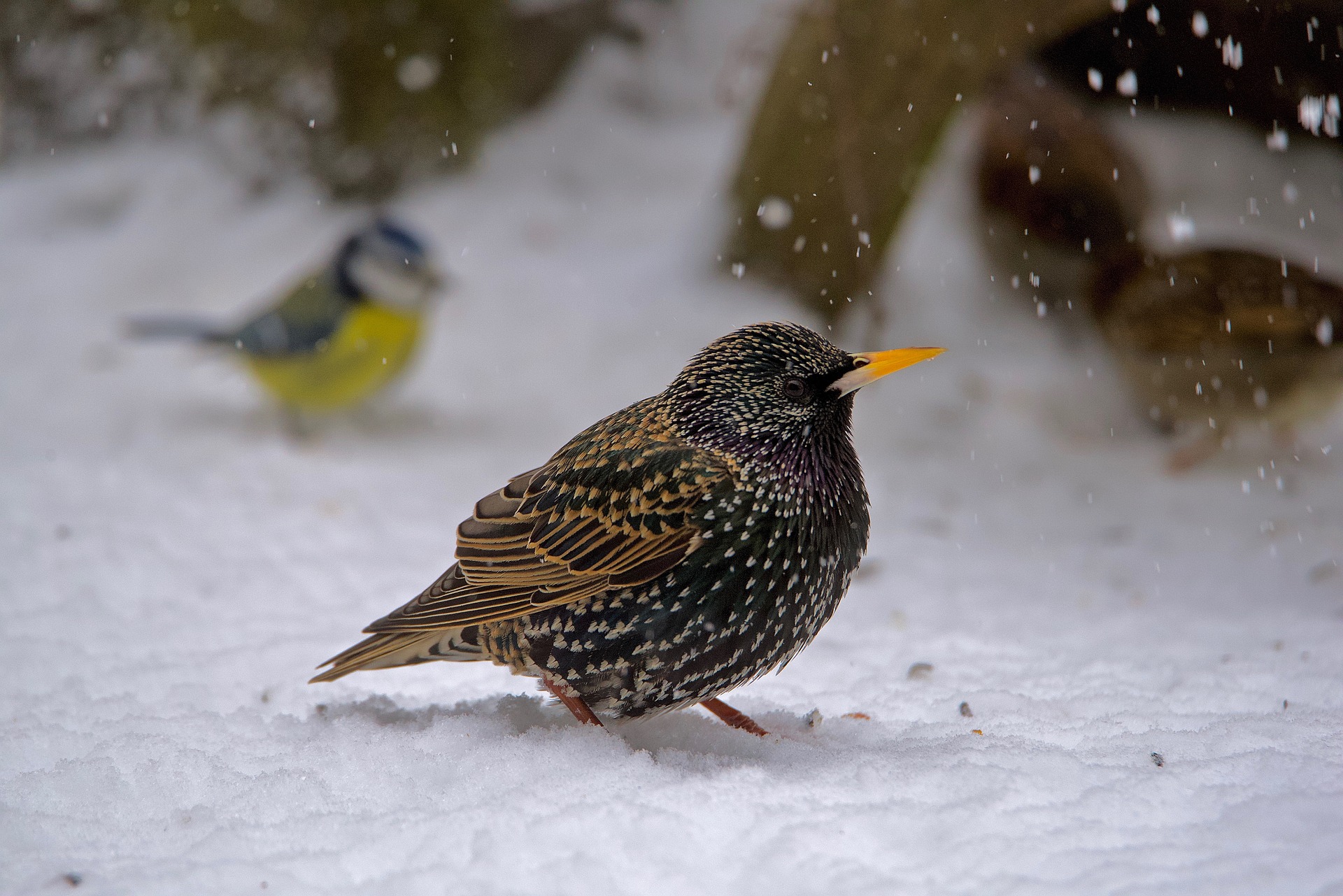
European Starling Behavior
They are loud birds that often travel in groups. They can often be found perching on wires and trees making loud whistles. They forage on the ground mostly by probing in the soil. Other times, they can forage on trees by eating fruits or catching insects in midair.
European Starling Food
The vast majority of European Starling are omnivorous and their diet involves insects, spiders, grasshoppers, flies, vertebrates, grains, and invertebrates. Normally, they obtain food by searching through short grass, consuming mammal’s external parasites, or by using the method of roller-feeding where they occupy the chance of feeding at the front by appearing as large flocks. Their food consumption includes dragonflies, caterpillars, and earthworms. Seeds, grains, and fruits like berries are also eaten by them. The unique structure of their head and the design of muscles enable the birds to crack open tough surfaces or certain seeds.
They feed mostly on berries, insects, and seeds. European starlings eat what is readily available. They feed heavily on insects such as grasshoppers, beetles, snails, spiders, flies, and caterpillars. In fall and winter, they feed on seeds, fruits, and berries. They are common on bird feeders where they feed on waste grains.
European Starling Habitat
The European Starling enjoys feeding in the lowlands. Starlings prefer wide, grassy regions, an abundance of water, and buildings or other structures that contain cavities necessary for creating their nests and rooting. Grassy fields are opted by them for breeding and are found in habitats ranging from green lands to marshlands. Some of them inhabit the forests and grassy plains and shrubby areas like Australian heath. You can easily spot a European Starling on the rooftop during warm seasons, trees with cavities, and on the widespread fields.
They typically live in places with people. They feed in city streets, mowed grounds and agricultural fields and nest on trees and various buildings. They prefer open and grassy areas and building that have large cavities which they use as nest sites.
Range and Migration

One can easily find European Starling in North America, Europe, and parts of Asia. Starlings occupy regions including Siberia in the east spreading to the Azores in the west and the Mediterranean Sea in the south to Norway at the top. Even though they, as a whole, reside permanently in North America, there are a few populations who migrate, especially those residing in the northern and eastern regions. Due to harsh weather and scarcity of food, they migrate during winters to western and southern Europe, northern Arabia. It is rather common to find Starlings in certain parts of northern Europe, north of Sahara in Egypt, the northern plains of India, Iberia, and Northern Africa in cold climates. With the arrival of spring, they return to the native eastern and northern parts.
Nesting
Unpaired males choose the ideal nesting locations and are usually in cavities of trees or small buildings. Male Starlings start working on their nests even before mating. They decorate the nest with scented flowers and leaves or herbs which are usually discarded once the female takes up the nest. Straw, cloth, dried grass, fine bark, and twigs make up the nests. The process takes up to 2 or 3 days and both the male and female incubate the egg.
European Starling Lifecycle
The females lay 4-6 eggs and incubation is carried out by both parents for about 12 days. They leave the nest after 21 days. European starlings produce 2 broods per year. They have a maximum lifespan of up to 22.9 years in the wild.
Bird Watching Academy & Camp Subscription Boxes
At Bird Watching Academy & Camp we help kids, youth, and adults get excited and involved in bird watching. We have several monthly subscription boxes that you can subscribe to. Our monthly subscription boxes help kids, youth, and adults learn about birds, bird watching, and bird conservation.
Bird Watching Binoculars for Identifying European Starlings
The most common types of bird watching binoculars for viewing European Starlings are 8×21 binoculars and 10×42 binoculars. Bird Watching Academy & Camp sells really nice 8×21 binoculars and 10×42 binoculars. You can view and purchase them here.
European Starling T-shirts
If you love the European Starling you should purchase a Bird Watching Academy & Camp T-shirt. To help support bird conservation we donate 10 percent to bird conservation activities.
European Starling Iron On Patches
Kids, Youth, and Adults love to collect our Bird Watching Academy & Camp iron on patches. Our bird watching patches help you keep track of the birds you have seen an identified. You can also display the patches on our Bird Watching Academy & Camp banners.
The European Starling is a great iron on patch to start your collection with. The patches are durable and can be sewn on or ironed on to just about anything.
European Starling Stickers
Stickers are a great way for you to display your love for bird watching and the European Starling. We sell a monthly subscription sticker pack. The sticker packs have 12 bird stickers. These sticker packs will help your kids learn new birds every month.
Bird Feeders For European Starling
There are many types of bird feeders. Here are our favorite bird feeders for your backyard. We use all of these bird feeders currently. Kids will have a great time watching birds eat at these bird feeders. Using this collection of bird feeders will provide a wide variety and many types of birds.
Best Bird Houses for European Starling
There are many types of bird houses. Building a bird house is always fun but can be frustrating. These 4 bird houses have become our favorites. Getting a bird house for kids to watch birds grow is always fun. We spent a little extra money on these bird houses but they have been worth the higher price and look great.


